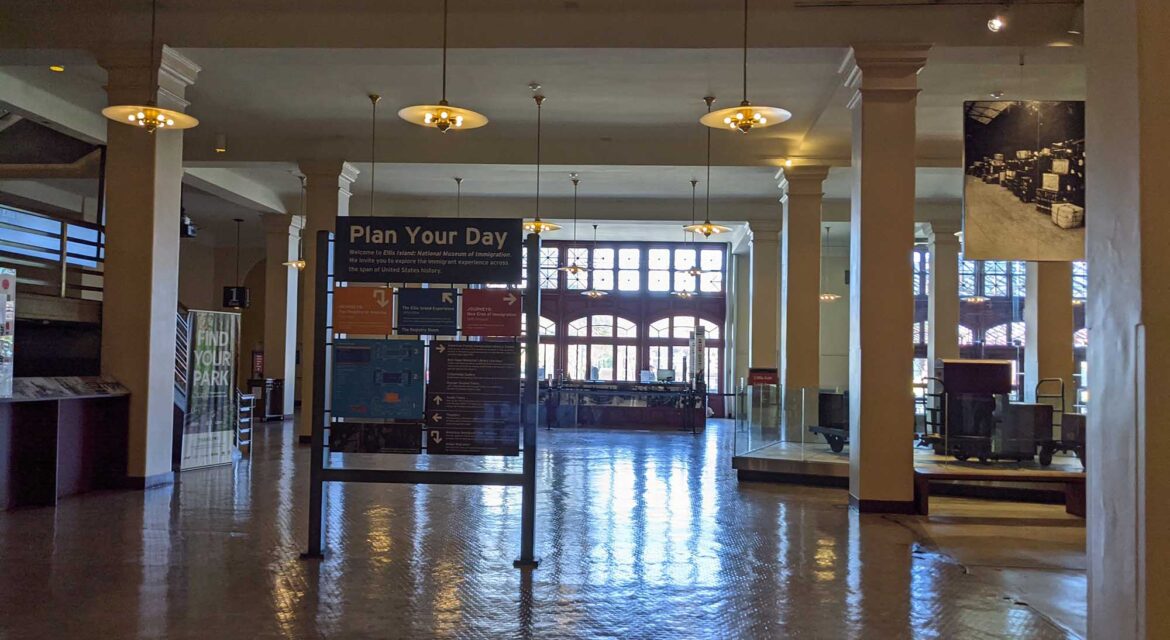 As the busiest immigrant inspection station in the United States in the early 1900s, Ellis Island is a literal piece of American history. The various buildings and structures that comprised this station now define the Ellis Island Museum of Immigration, which resides on the island in New York Harbor. The effort the preserve this history has created numerous economic opportunities while also ensuring that the cultural relevance of this landmark can be experienced by audiences of all eras.
As the busiest immigrant inspection station in the United States in the early 1900s, Ellis Island is a literal piece of American history. The various buildings and structures that comprised this station now define the Ellis Island Museum of Immigration, which resides on the island in New York Harbor. The effort the preserve this history has created numerous economic opportunities while also ensuring that the cultural relevance of this landmark can be experienced by audiences of all eras.

America’s Largest Immigration Station
 What had become known as Little Oyster Island in the 1700s was acquired by Samuel Ellis in 1774, providing the name that would eventually define it. The island was utilized by the United States military in the Revolutionary War era, which would eventually lead to the establishment of Fort Gibson. After falling into disuse, the United States Congress approved a bill to create an immigration station on Ellis Island.
What had become known as Little Oyster Island in the 1700s was acquired by Samuel Ellis in 1774, providing the name that would eventually define it. The island was utilized by the United States military in the Revolutionary War era, which would eventually lead to the establishment of Fort Gibson. After falling into disuse, the United States Congress approved a bill to create an immigration station on Ellis Island.
From 1892 to 1924, Ellis Island was America’s largest and most active immigration station, where over 12 million immigrants were processed. Peak years would see an average of nearly 2,000 people go through the station every day. Limitations that were put on the number and nationality of immigrants in 1924 saw this traffic drastically reduced, leading to the facility being used manily as a detention center. Massive expenses for the upkeep of the buildings and facilities would lead to the Ellis Island facilities being closed in 1954.
Numerous attempts at redeveloping the site to create everything from condos to colleges were made over the years following this closure. A 1964 report from the National Park Service that proposed making Ellis Island part of a national monument would eventually lead to the creation of the Ellis Island National Museum of Immigration. Opened to the public in 1976, numerous buildings and structures at Ellis Island define the modern Ellis Island museum, including the main building that was restored to look as it did in the 1920s.
The experiences that audiences can have across the space have further connected them to the history that Ellis Island protects, enabling numerous economic opportunities related to the sales of tickets, merchandise and other items across the space.

Tickets, Merchandise and More
 Ellis Island is only accessible via ferry, with ferry ticketing run through a vendor authorized to provide tickets and transportation to Liberty and Ellis Islands. As an additional means of revenue, the Ellis Café has a variety of snacks available such as organic fruit, chips, ice cream, and cold beverages.
Ellis Island is only accessible via ferry, with ferry ticketing run through a vendor authorized to provide tickets and transportation to Liberty and Ellis Islands. As an additional means of revenue, the Ellis Café has a variety of snacks available such as organic fruit, chips, ice cream, and cold beverages.
A non-profit shop located in the Main Building sells books, apparel, historical reproductions, collectibles, and games. A more traditional souvenir store near this spot sells various items all related to Ellis Island and the nearby Statue of Liberty. Items for sale include magnets, jewelry, toys, picture frames, t-shirts, and collectible coins.
Millions of immigrant arrival records were made available to the public in 2001, providing an additional means of connection for audiences to the history and culture that the site preserves. The preservation of this history has ensured that the Ellis Island National Museum of Immigration will continue to cultivate experiences that attract the attention of audiences across the nation and world.

History and Legacy
 Few sites contain the history that Ellis Island features but the efforts to preserve this history highlight what it can mean to protect this sort of legacy, no matter the source. Doing so has provided audiences with access to experiences that might have otherwise been lost to them, enabling the entire site to become a landmark that will continue to attract the attention of everyone.
Few sites contain the history that Ellis Island features but the efforts to preserve this history highlight what it can mean to protect this sort of legacy, no matter the source. Doing so has provided audiences with access to experiences that might have otherwise been lost to them, enabling the entire site to become a landmark that will continue to attract the attention of everyone.

